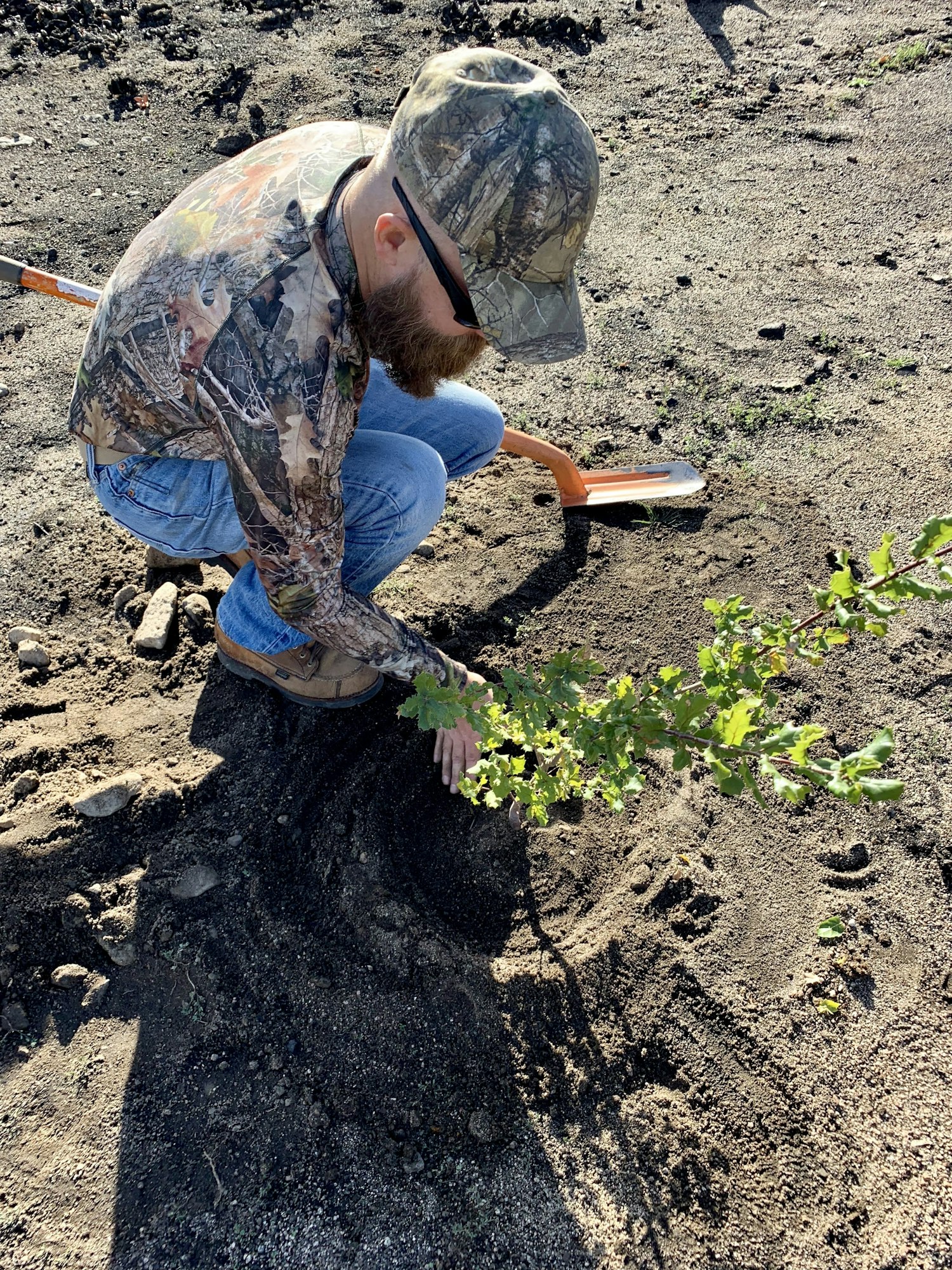Restore Habitat
Communities and landowners can repair degraded habitat. Potential improvements vary depending upon existing site conditions, but might include:

- removing exotic (non-native) plant and/or animal species and re-establishing natives;
- replacing fences that limit wildlife access and migration;
- closing unnecessary roadways and trails to control access and erosion;
- removing limited amounts of vegetation for habitat improvement or fire management, but also preventing unnecessary clearing and pruning, while leaving snags, dead limbs, and leaf litter in place;
- prohibiting grading, compaction, and trenching near oak root zones;
- directing irrigation runoff away from oak woodland, coastal-sage-scrub, or chaparral vegetation.
If you are interested in becoming involved with habitat restoration, contact your local Resource Conservation District (RCD) to learn about groups and projects in your community. Volunteer opportunities with the Riverside-Corona RCD include bluebird nest boxes monitoring, waterway clean-ups and plantings, stream water quality monitoring, and labeling storm drain inlets with the message Only Rain in the Drain.

The Riverside-Corona RCD with the Santa Ana Watershed Association of RCD's (SAWA) and Team Arundo remove invasive plant and animal species from tributaries to the Santa Ana River. If you own a waterway, contact the RCRCD for invasive species removal and treatment. If you are a landowner of a natural area and would like help assessing your habitat, contact your local RCD or the USDA Natural Resources Conservation Service for free assistance.
Attempts at creating new habitat to mitigate for habitat removal, are complicated, costly, and frequently unsuccessful. Our best option is to preserve and restore the habitats we have.

